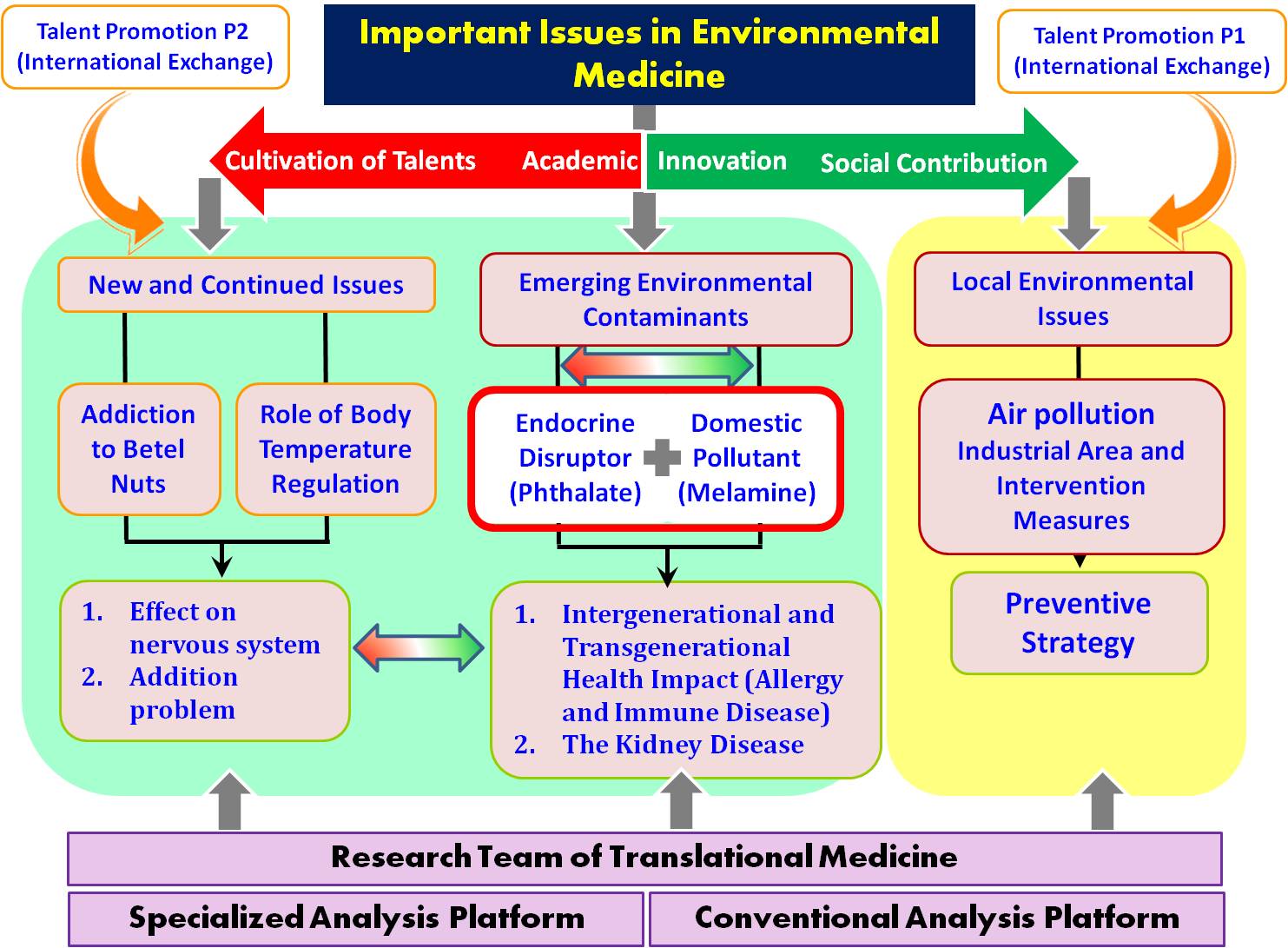Current Targets and Strategies
The Center for Environmental Medicine (the Center) focuses on identifying, assessing, and resolving various environmental health issues in Taiwan and abroad. The Center is actively applying multi-disciplinary research approaches to generate the solid scientific-evidence data that can be used to help achieve primary prevention and secondary prevention goals and help in the formulation of government policies aimed at solving environment-related problems. It is hoped that the Center will become one of world's most prominent centers for research on environmental medicine.
Currently, the Center has three main research focuses, "Emerging Environmental Toxicants", "Local and National Environmental Issues" and "New and Continuing Concerns". Under emerging environmental toxicants, our research team investigates the effects and mechanisms underlying the effects of common and emerging environmental toxicants (e.g., melamine and phthalates) on the risks of kidney diseases and immunological disorders. The local and national environmental issues we are currently focusing on are how to mitigate indoor and outdoor air pollutants and adverse health consequences. For example, one of our research teams is mapping out exposures to oil fumes and linking them to the health issues. The other team is establishing a system for real-time monitoring of air pollution in the Kaohsiung area industrial region for studying the effectiveness of public health interventions, especially in at risk populations. The new and continued concerns we are currently focusing on are studying the role of body temperature regulation in all species and mechanisms behind as well as brain nerve imaging and neurocognitive mode in betel nut addicts. These two topics are consistent with our goals of cultivating new talent and fostering education for graduate students. In addition, the Center is also actively developing several advanced and unique analytical platforms to support our current and future research themes. These platforms include the use of mass spectrometry analysis, including adductomics, and bioinformatics, big data analysis, food safety screening and disease animal models. These platforms are currently used by researchers at the Center to explore environment-gene interactions and disease mechanisms and develop corresponding disease prevention strategies. We believe that our research results and the platforms we develop at Center for Environmental Medicine can be used as a strong foundation for the development of effective disease prevention measures, the successful implementation of public health policy, and education in both medical and basic sciences.
Figure 1: Vision, Aim and Strategy

Figure 2: Conceptual Framework
(Aims:Academic Innovation、Social Contribute、Cultivation of Talent、International Exchange)


